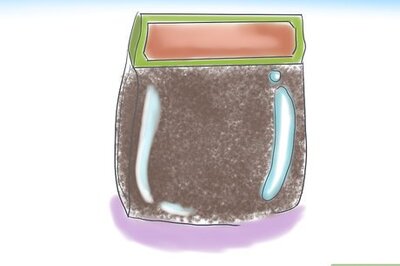
views
The Centre on Friday asked 15 districts of four states reporting higher number of COVID-19 deaths and infections to work on drawing up proper containment zones, effective monitoring of home isolation cases, adequate testing, ensuring seamless hospitalisation and reducing the waiting time in triaging.
At a review meeting held by Union Health Secretary Rajesh Bhushan, the district authorities were asked to bring down the response time of ambulances while ensuring zero refusal by them and effective clinical management of hospitalised cases to cut down on the fatalities due to the disease, sources said.
These 15 districts across Andhra Pradesh, Punjab, Karnataka, Uttar Pradesh and Tamil Nadu have been exhibiting higher active caseload, fatality rates and a surge in COVID cases for the past four weeks.
During the meeting held via video-conferencing, Bhushan exhorted the health secretaries of these states to take draw action plans to proactively curb the chain of transmission and bring the COVID-19 mortality rate below one per cent.
The 15 districts are Chittoor, Prakasam, Mysuru, Bengaluru Urban, Ballari, Koppal, Dakshina Kannada, Davangere, Ludhiana, Patiala, Chennai, Coimbatore, Salem, Lucknow and Kanpur Nagar.
The Union health secretary is slated to hold a review meeting on 25 more districts from Delhi, West Bengal, Uttar Pradesh, Maharashtra, Gujarat, Puducherry and Jharkhand which also have been reporting an increase in daily active cases and deaths due to the coronavirus infection, the sources said.
According to the sources, it has come to notice that these districts have been setting up micro-containment zones, which are “highly unscientific as it leads to missing out on close contacts during tracing.”
The states in Friday’s meeting were asked to take a relook into defining containment zones and demarcation of buffer zones in the affected districts for carrying out effective contact-tracing and eventually, breaking the chain of transmission of the infection, the sources added.
They have also been advised to carry out proper house-to-house surveys to trace active cases and conduct adequate testing. They have also been asked to effectively monitor patients in home isolation and ensure early hospitalisation in case of disease progression.
“Regular physical follow up of patients in home isolation is not happening properly in these districts, as a result of which many are turning critical without the knowledge of the administration and some instances of patients in home isolation dying have also come to the fore,” a source said.
“It has also come to notice that patients requiring hospitalisation have to wait for long hours at the triaging area of health facilities before they are shifted to the ICU or put on oxygen and ventilators as per requirement. Long waiting time at the triaging areas also leads to spread of infection and further complication of cases,” the source said.
In addition to the state health secretaries, district collectors, municipal commissioners and other functionaries also participated in the digital review meeting.
The state health secretaries provided an in-depth analysis on the current status of COVID-19 in these districts, covering aspects of containment measures, contact-tracing, surveillance activities, facility-wise case fatality rates, trends in terms of weekly new cases and deaths, etc. and shared their detailed roadmaps and action plans for the next one month.
Granularities in terms of split of RT-PCR and Rapid Antigen tests conducted in the districts, re-testing percentage of symptomatic negatives from antigen tests, testing lab utilisation, home isolation status, hospitalisation status and bed occupancies of oxygen-supported beds, ICU beds and ventilator etc, were also shared with the Centre.
The states have been asked to implement stringent containment measures and social distancing norms, strict perimeter control, early identification by ramping up testing across the districts, optional utilisation of RT-PCR testing capacity and use of Rapid Antigen tests as a screening test in hotspots and densely populated areas.
The states were asked to ensure seamless hospitalisation and early admission for patients requiring medical support, especially in cases of co-morbid and elderly population and follow effective infection control measures in hospitals to safeguard healthcare workers from contracting the infection.
District collectors and other functionaries were asked to prepare and update district-specific plans to continue their efforts to manage the pandemic with the same rigor.
India’s COVID-19 caseload mounted to 39,36,747 on Friday,with83,341 infections being reported in a span of 24 hours, while the death toll climbed to68,472 with1,096people succumbing to the disease in a day, data updated at 8 am showed.




















Comments
0 comment